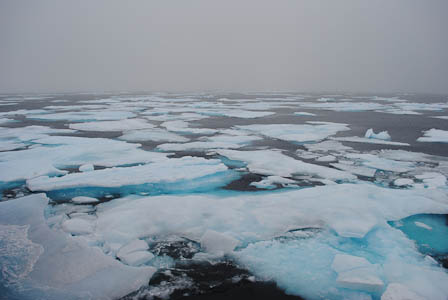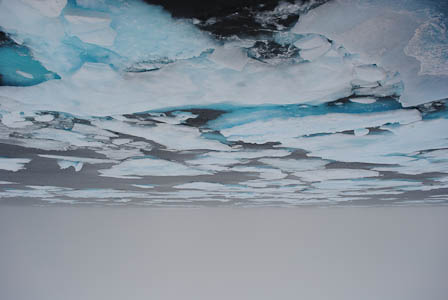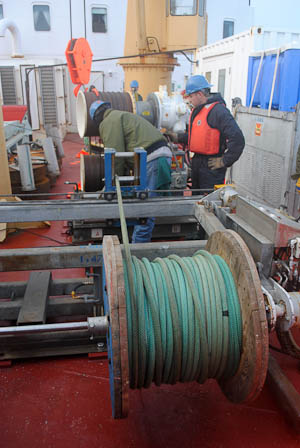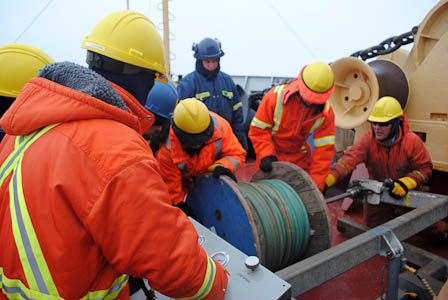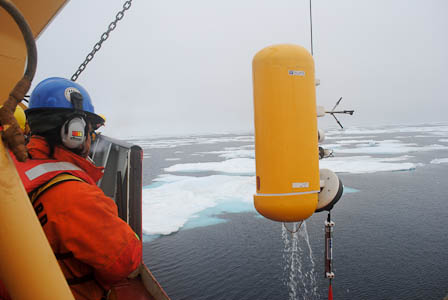Alex KainSeptember 20, 2009Amid the thunderous echoes of sea ice crashing against the hull, scientists and crew members of the Louis S.-St. Laurent awoke to a frozen seascape. Today marks the ship's first encounter with ice floes. Brilliant white and crystalline blue, they extended into the gray horizon and surrounded the Louis in a polar wonderland.
In this upside-down desert world, Mike Dempsey from the Canadian Department of Oceans and Fisheries led the successful recovery of the first mooring of the expedition, a CABOS (Canada Basin Observing Station) managed by the International Arctic Research Center. Weather conditions improved significantly from the previous day, allowing for an efficient recovery with no complications. Moorings are part of the fleet of instruments used on the Beaufort Gyre expedition to profile ocean conditions. The buoys are composed of three principal components: a float, a rope line, and a probe. The rope line is fastened to the buoy, and the probe crawls up and down the line while profiling ocean water at various depths. The probe on the CABOS mooring recovered today has made 425 trips up and down the length of the 1000-meter line over the past year. Though conceptually simple, recovering a mooring presents a host of challenges. The process by which one is recovered resembles something more commonly found in a stuffed animal crane game, except instead of using a joystick and a claw to fetch a Beanie Baby, recovering a mooring requires inserting a ten-centimeter hook into an extremely costly, one-meter wide buoy in ice-covered water while driving a 100-meter behemoth boat. The stakes are high, which is why each recovery is carefully planned out and executed by crew members and scientists with lots of experience.
The ship is currently steaming toward "Tuck," the colloquial name of the Canadian town Tuktoyaktuk, for fueling tomorrow. Once filled, the ship will set off for three weeks among the floes. All text and photos property of Alex Kain. Last updated: October 7, 2019 | |||||||||||||||||||||||||||
Copyright ©2007 Woods Hole Oceanographic Institution, All Rights Reserved, Privacy Policy. | |||||||||||||||||||||||||||


